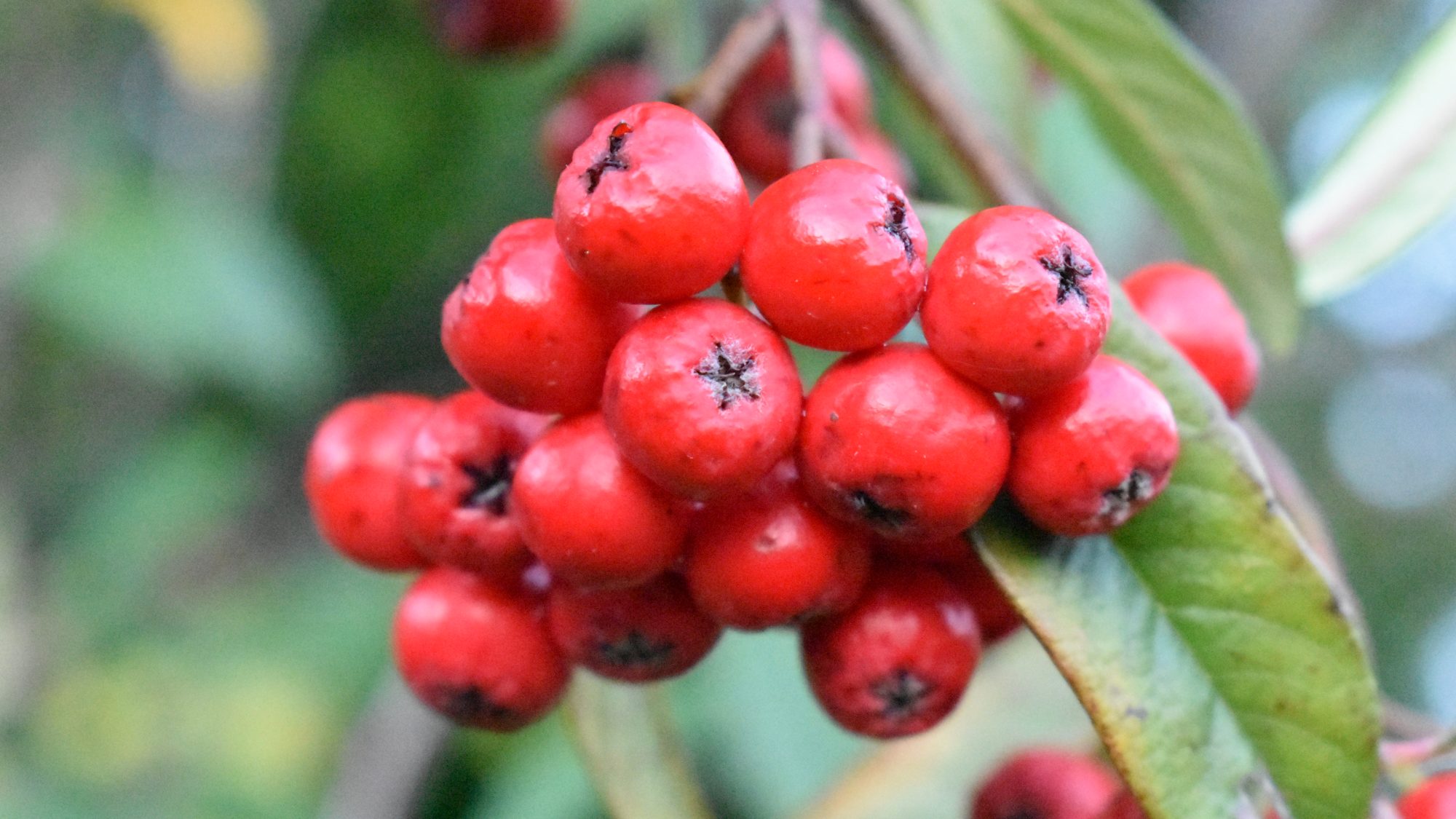This large, evergreen shrub can be found on the southern side of Cory Lodge.
The genus Cotoneaster has a natural range of Europe, North Africa and Asia, and contains over 250 species of evergreen and deciduous shrubs. Members of the genus are characterised by cup-shaped pink or white flowers borne either individually or in cymes; alternate slender or rounded leaves; and small, glossy, spherical or ovoid fruits. Species vary greatly in their size, ranging from spreading, prostrate alpines, reaching only a few centimetres in height, to large species growing to over 10m in height and spread. C. x watereri is a vigorous hybrid reaching over 5m in height and spread. Raised by John Waterer Sons and Crisp Nursery in the 1920’s this is a hybrid of C. frigidus (a deciduous Himalayan species reaching over 10m in height and spread) and C. salicifolius (a Chinese species over 5m in height with slender evergreen leaves and arching branches). It has a broad habit, with arching stems. In summer flat cymes of white flowers are produced, and these are followed by clusters of drooping, glossy, red fruits which are particularly attractive to birds.

